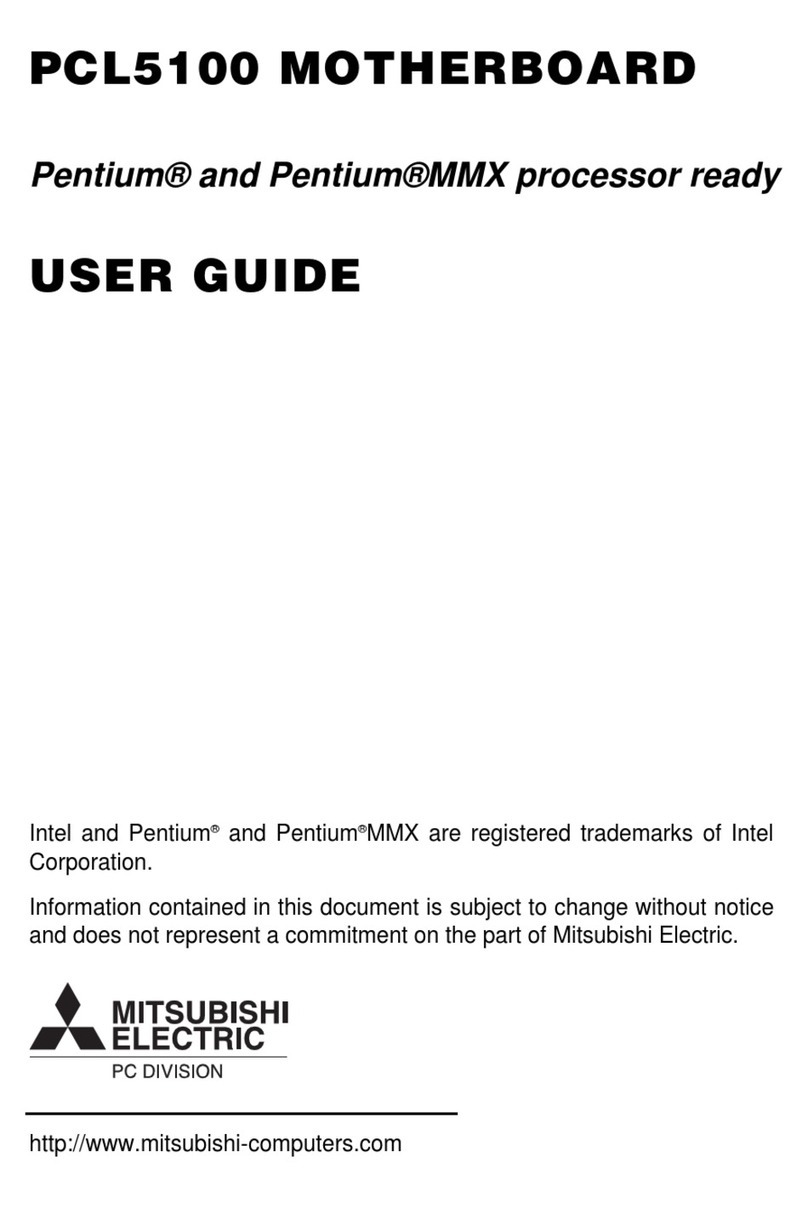PH440 NLX Motherboard User Guide September 1998
MITSUBISHI ELECTRIC MOTHERBOARD DIVISION PAGE 6 OF 51
Keyboard and Mouse ...............................................................................................................24
Floppy Disk Interface...............................................................................................................24
Serial Ports...............................................................................................................................24
Parallel Port..............................................................................................................................24
Additional I/O................................................................................................................................24
IDE Disk Controller.................................................................................................................24
Universal Serial Bus (USB) ..................................................................................................... 24
Security..........................................................................................................................................24
Motherboard Power .......................................................................................................................25
Processor Power.......................................................................................................................25
Battery......................................................................................................................................25
Power Management .......................................................................................................................25
Standby Switch.........................................................................................................................25
Behaviour After AC-Disconnect..............................................................................................25
Sleep State Indication...............................................................................................................25
System Management......................................................................................................................26
Heceta II System Monitor........................................................................................................26
Fan Control....................................................................................................................................26
Expansion Slots .............................................................................................................................26
Industry Standard Architecture (ISA) ......................................................................................26
Peripheral Component Interconnect (PCI)...............................................................................26
Bus Resource Utilisation ...............................................................................................................27
ISA DMA Channels.................................................................................................................27
ISA Interrupts...........................................................................................................................27
PCI Interrupts...........................................................................................................................27
PCI Device Selection (motherboard devices)...........................................................................28
PCI Arbitration.........................................................................................................................28
5 BIOS Setup & POST 29
BIOS Setup....................................................................................................................................29
Control keys.............................................................................................................................29
Getting help in BIOS Setup......................................................................................................30
Reserving ISA legacy resources...............................................................................................30
Multi-boot facility..........................................................................................................................30
Power-on self-test..........................................................................................................................31
Recoverable POST errors.........................................................................................................31
Terminal POST errors and beep codes.....................................................................................32

































